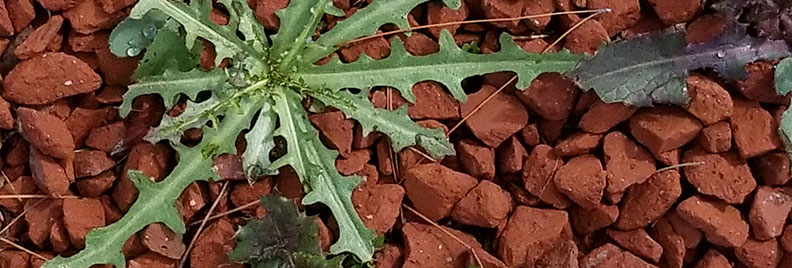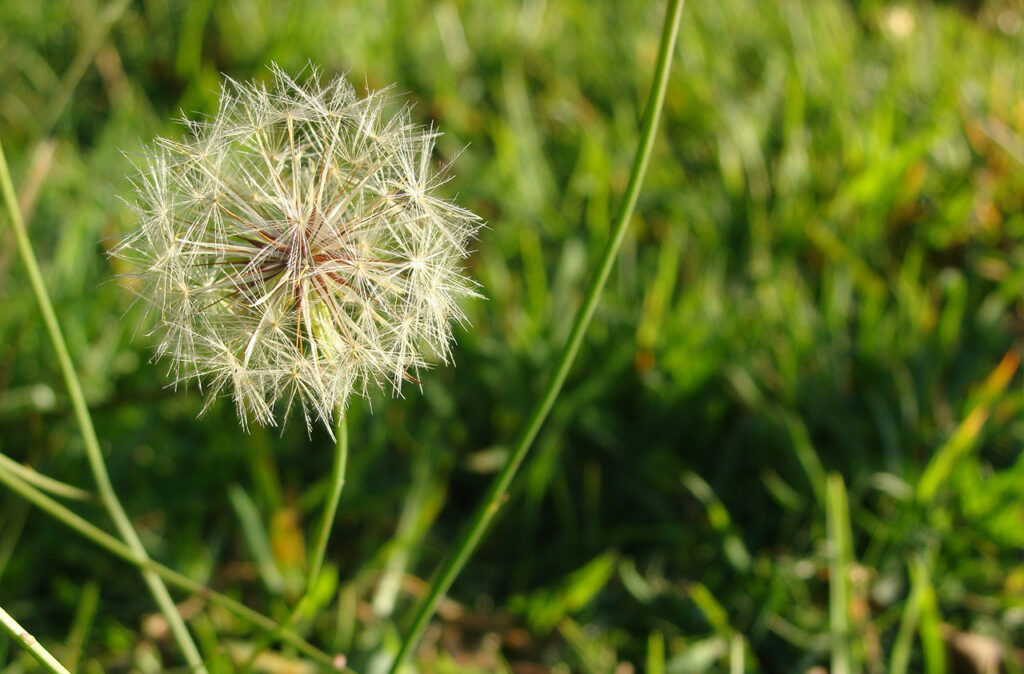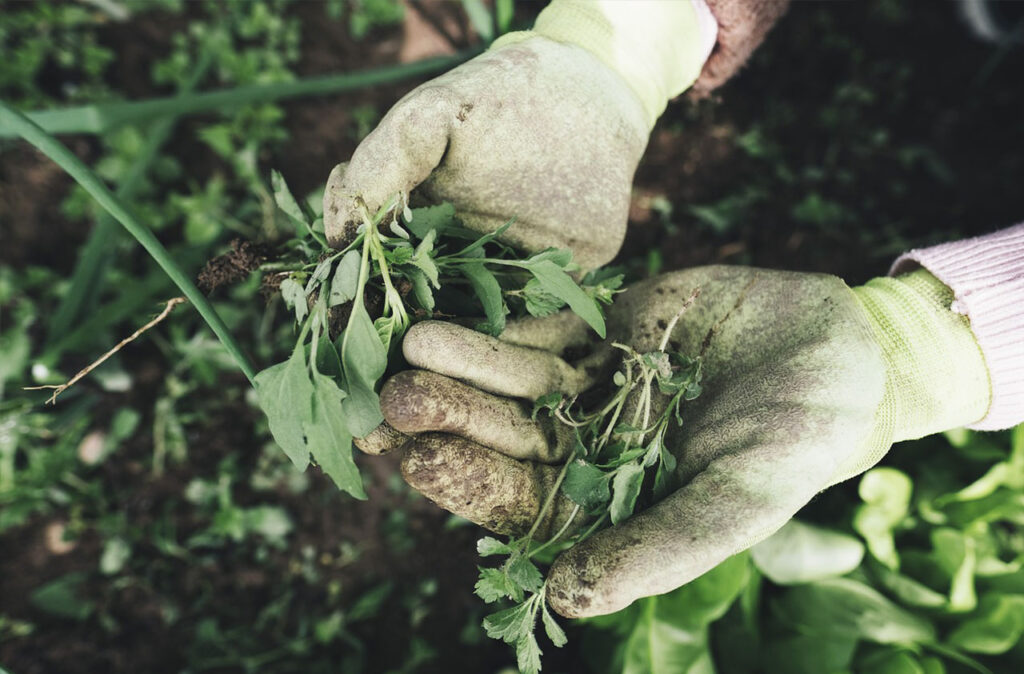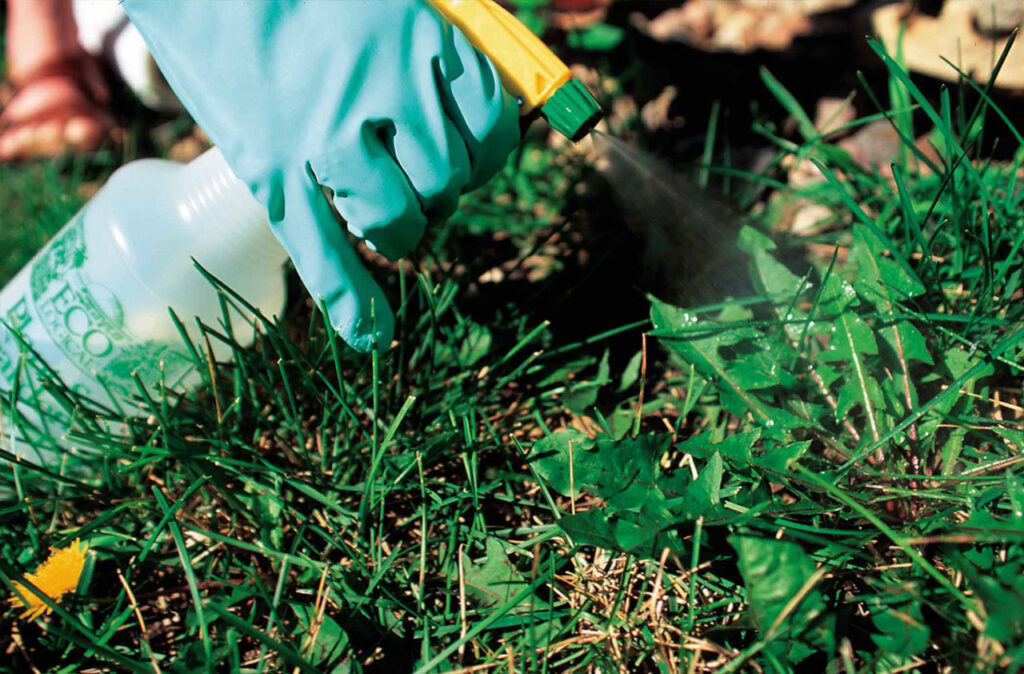
Weeds
What are Weeds?
Weeding Tips
General Weed Prevention
Weeds. ‘Nuff said. Is there anything more annoying to find in your garden? Like your teenage son’s annoying friends, you’re never quite rid of them and they spend all their time gobbling up the food and water intended for your plant babies. Not today, honey. We’re about to scare the crap out of weeds and get them out of our hair for good.
What are Weeds?
Believe it or not, weeds aren’t always bad. (Again, a lot of parallels with your teen’s buddies.) Some of them help with preventing erosion and aerating the soil. Some of them help pull nutrients from deep under the subsoil or pull nitrogen from the atmosphere. Some even indicate there’s an issue with your soil.
Of course, that’s not to say we’re all about to strum the guitar and sing kumbaya with our weeds anytime soon. If you’ve noticed a weed emerging and done a little research about it, you can usually ascertain whether it’s a friend or foe pretty quickly. And if it’s a foe, it’s important to know thy enemy.
There are three general types of weeds: grassy, broadleaf, and sedge. Each has a temperature they tend to thrive in (making them cool or warm season weeds) and each has an ideal mode of action for elimination. But first, here are some general tips.

Weeding Tips
When it comes to weeding, we’re all about working smarter, not harder. Why would you want to spend a whack of time on a plant you don’t want? We only have one life. With that in mind, here are some general weeding hacks you can use for both garden and lawn weed control.
Weed After Watering
Wet soil is softer and won’t hold onto weed roots as tightly. Pull weeds after watering or after rainfall.
Off With Their Heads
If you don’t have time to pull all of your weeds, take a few minutes to pull off and dispose of flowers and seed heads that enable weeds to spread quickly.
Weed Early & Often
Like any unpleasant chore (those of us with dogs could name one), frequent weeding is a lot easier than pulling out a bunch at once. Make a quick “weed check” part of your daily routine and catch them when they’re small, few, and easy to remove.
Loosen Up
If a weed doesn’t come up easily, use a tool like a spade or a fork to loosen the soil around the root ball. If you yank a well-lodged weed, the roots will just re-generate a new plant in a few days and pretty soon you’ll be experiencing some weed-pulling déja-vu.

Burn them Alive
Are we being dramatic? Maybe, but it works. Weeds growing between the cracks in your patio can be tricky to pull correctly, so try this easy and effective weed killer: boiling water. You won’t want to use this in your garden beds due to the risk of cooking your other plants. For garden weeds, you could also try strangling them. (Again, only being somewhat dramatic.) Cover them with dark plastic from a black or dark green garbage bag for a month to choke them out.
Get an ID
The best weed killers are informed weed killers. Well, there are also chemicals, but we’ll talk about that later. If you have a few weed species in particular that are trying to take over your property, learn what they are. Broadleaf weeds, grassy weeds, and sedges require different approaches, and their seasonality will also affect your action plan. Think like a spy; learn their weakness, and what makes them tick. Then strike.
Straight Up
If you find yourself manually pulling weeds, remember to pull them straight up and out of the ground. Pulling at an angle will increase the chance of separating the stems from the roots. Then the roots will just re-generate a new plant in a few days and pretty soon you’ll be experiencing some weed-pulling déja-vu.


General Weed Prevention
Before you spring for an herbicide formula, try these prevention tips and see how it goes.
Mulch – Mulch is a great way to prevent weed seeds from germinating while conserving moisture and (often) adding more organic matter to the soil. We love a good mulch!
Create a Canopy – Plants packed in close together block weeds from the sun before they have a chance to photosynthesize. Space plants as far apart as they need, and no further.
Dispose of Weeds Properly – After pulling weeds, throw them directly in a bucket, lawn bag or some other receptacle so they don’t touch your lawn or other places in your garden. Wash your gloves after weeding in case weed seeds have snuck along for a ride.
Do Not Compost! – While edible weeds, like dandelions, can be reused in your salad bowl, you should not add weed waste to your compost bin. That’s just asking for weed contamination in your future garden soil.
If you feel like you need to use a weed killer to gain control, don’t just grab the first weed killer you see!!! More damage is done using the wrong products at the wrong temperatures. Know the weed you are treating and know the temperature restrictions before applying.
While not all weeds are our mortal enemies, they are something we all need to learn how to deal with. A proper plan of attack can help keep weeds away and keep your garden looking neat and tidy.
